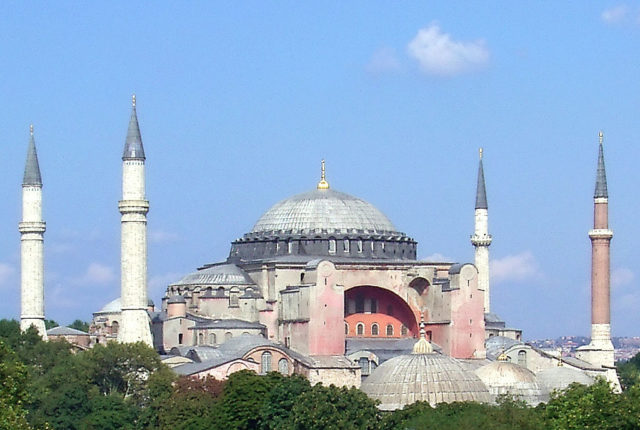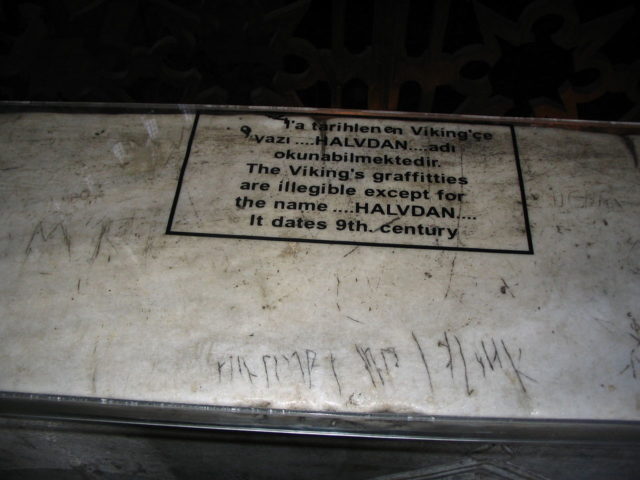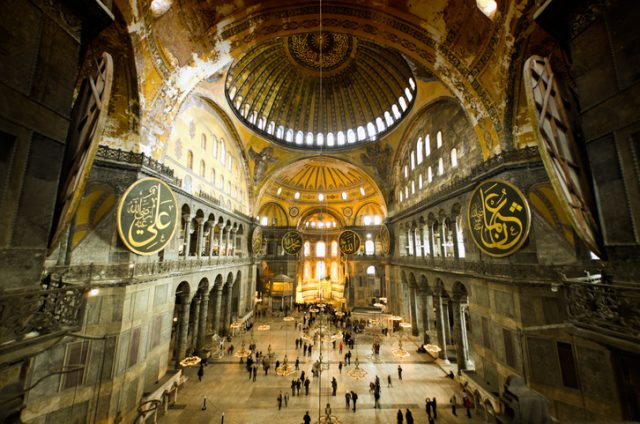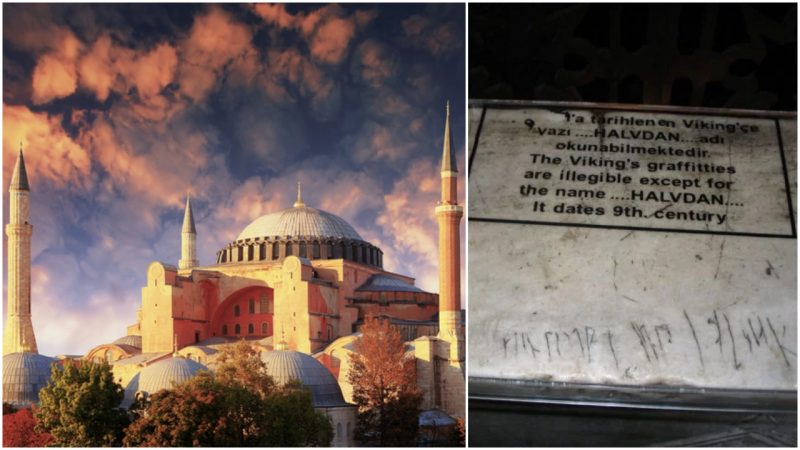Dubbed the lords of the seas, the Vikings are widely known as some of the most skilled shipbuilders and sailors in history. The seafaring abilities of these people, who were renowned as fierce warriors, enabled them to travel easily across the European seas and rivers and conquer new territories.
Over the centuries, many exciting archaeological finds of the Vikings, who traveled beyond their settlements in Scandinavia, have been discovered across Europe. These finds include graves, rune stones, fortresses, precious artifacts such as gold and silver jewelry, and even ships. However, what most people don’t know is the fact that the Vikings also left behind a lot of graffiti. One of the most famous example can be seen in Hagia Sophia in Istanbul, Turkey.
At some point, the epic voyages of the Vikings along the river systems and the European seas would bring them all the way to Constantinople (known today as Istanbul), the capital of the Byzantine Empire and arguably the world’s richest city at the time. Unable to conquer the great city, they decided to go into the service of the Byzantine Emperor Basil II, who would go on to form his personal Viking-guard elite unit known as the Varangians and would begin a tradition of hiring mercenaries of Viking origin.

This elite unit of Viking warriors didn’t just take part in many Byzantine campaigns across the Empire but also participated in the social and cultural life of Constantinople, leaving a mark on the Byzantine capital, quite literally in this case. Today, visitors of the Hagia Sophia can see two pieces of graffiti most likely carved by members of the elite unit into the walls of this important Byzantine structure.
Things you may not know about the Vikings
Rebuilt three times over the centuries, this architectural marvel and symbol of Istanbul has witnessed many crucial historical changes, serving both as Imperial Church, from 537 until 1453, and Mosque, from 1453 when Sultan Mehmed II conquered Constantinople.
During the 9th century, the Vikings who visited or possibly lived in Miklagard (The Great City), as they called Constantinople in Scandinavia, most certainly went to see Hagia Sophia and apparently decided to leave a permanent mark on the top floor of the southern gallery by carving two pieces of graffiti into the walls of the Byzantine Imperial Church.

For centuries it was believed that the runic inscriptions were nothing more than just simple cracks on the marble in the southern gallery of Hagia Sophia. However, this changed in 1964, when experts finally revealed that what was long thought to be just cracks in the marble was actually a sentence inscribed on the wall with runic letters meaning: “Halvdan was here.”
Apparently, Halvdan was not the only Viking who visited Hagia Sophia. About a decade after this find was revealed, another spectacular discovery connected with the Scandinavian visitors of Constantinople was made. Experts believe that the second Viking “graffiti artist” inscribed his name Ári or Árni in the same gallery.

There is a debate over whether Halvdan and Ári were members of the Varangian Guard or were just traders visiting Constantinople. While some argue that the Varangian Guard was established much later, during the reign of the Byzantine Emperor Basil II, whose reign began in 976, others claim that they might have been fur traders who came to Constantinople through the Russian river systems and the Black Sea.
There may be additional runic inscriptions from the Viking age waiting to be discovered inside Hagia Sophia. So if you are visiting this iconic museum be aware, you might find more specimens of ancient runes.
